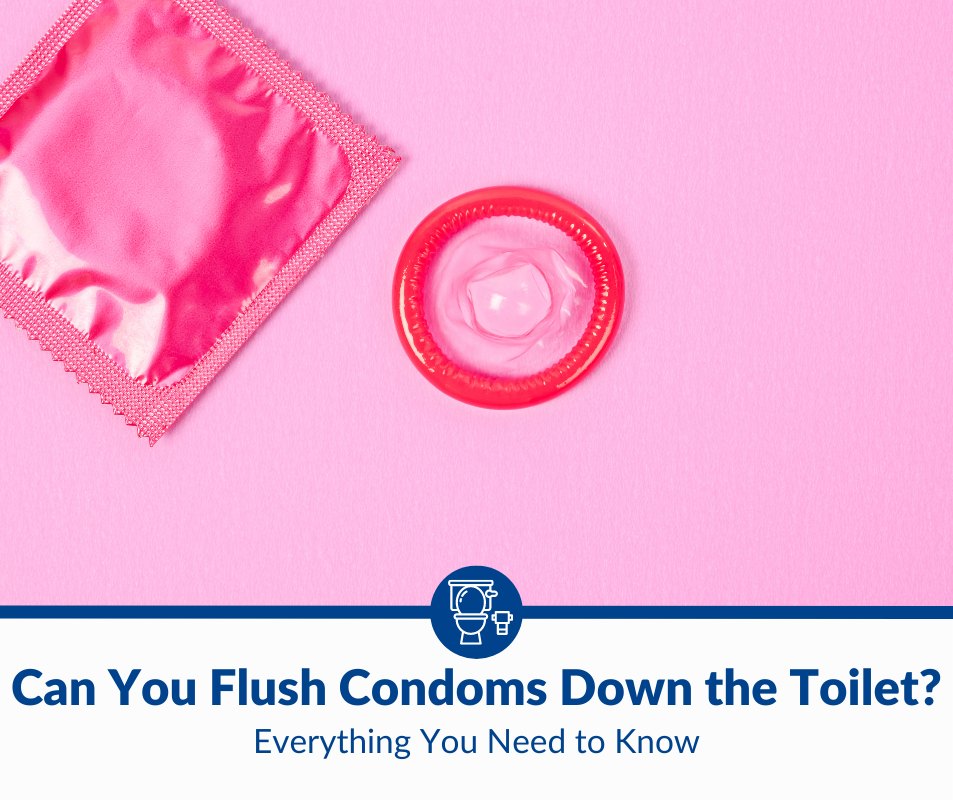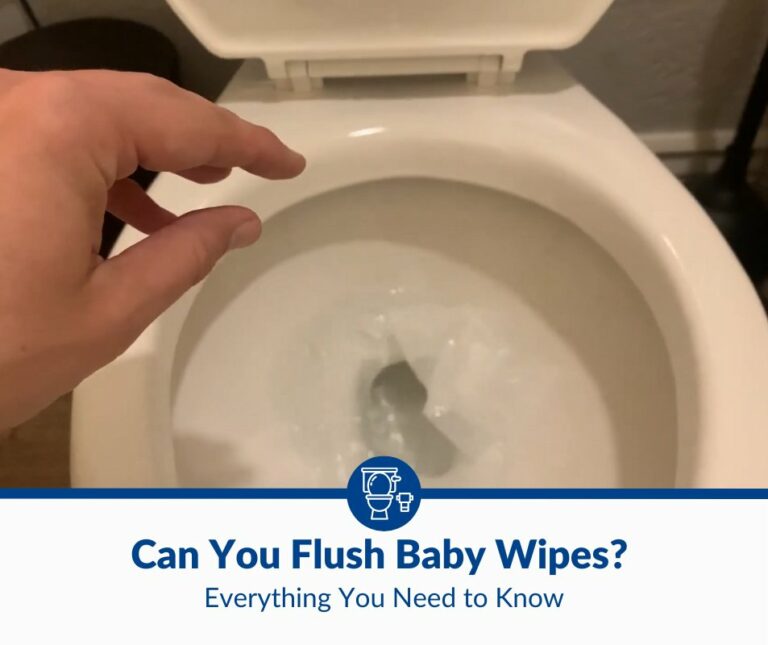Can You Flush Condoms Down the Toilet?
Condoms are a popular and effective form of contraception that people can also use to protect themselves from sexually transmitted infections (STIs). However, even though condoms are used worldwide, there are still plenty of myths surrounding how to dispose of them.
You should not flush condoms down the toilet. Because they’re typically made from rubber and plastic, condoms don’t eventually break down in the water. Flushing them down the toilet will create significant issues for your home plumbing, local water treatment, and natural water supply.
The rest of this article will explore a few topics related to this question, including how condoms interact with your plumbing system, what materials they are made from, their effects on the environment, and how to dispose of them properly.
Will Condoms Clog a Toilet?
Condoms will eventually clog a toilet if continually flushed. Most condoms are not made of biodegradable material and won’t break down easily in water. This means they get caught in your septic tank or plumbing system. They build up over time, causing a clog that must be removed manually.
Latex build-up tends to create a fatberg, which can be very tricky and expensive to fix. A fatberg occurs when oil and grease are poured into sink congeals and mixed with other non-biological waste (baby wipes, tampons, condoms, etc.) present in the sewer. They can grow very tall and heavy. One of the largest recorded was 820 feet (250 meters) long and weigh 130 tonnes (117,934 kilograms).
Besides their massive height and weight, fatbergs are tough as rocks and host a variety of harmful bacteria. If left untreated, they can destroy plumbing systems and force sewage to creep back into homes. Major cities like London and New York spend millions to clear the sewers of these masses and other debris.
Removing these massive mounds of fatberg requires a constant barrage of high-pressure hoses to break them down into small pieces that can be sucked away into tankers. Although this is the extreme side of the issue, removing objects and debris from your toilet trap is the first step to preventing it.
Why Condoms Don’t Dissolve in the Toilet
The materials used to make condoms are not water-soluble. Instead, they tend to remain intact for long periods and can cause clogging issues over time.
Let’s explore what condoms are made of to better understand why they don’t dissolve in the toilet.
They’re Made of Latex
Latex is some of the most common and available materials for condoms. Latex is a white substance harvested from under the bark of rubber trees, making it a 100% natural substance. Due to its composition, latex is biodegradable and typically decomposes anywhere from 6 months up to 4 years.
Biodegradability describes a material or product’s ability to break down naturally and is critical to the life cycle of our planet. This process occurs naturally thanks to microbes like fungi and bacteria. However, even if a material is said to be biodegradable, it doesn’t mean it will eventually disintegrate in any setting. Different materials will require certain conditions for them to break down.
Spermicide Slows Down the Decomposition of Latex
To prevent pregnancies, condoms are typically covered in spermicide, which makes it harder for them to degrade. Spermicide is designed to damage and kill sperm inside the vagina. While this it’s integral for preventing pregnancies, spermicide compounds are made from petroleum-based chemicals.
These chemicals will extend how long it takes latex condoms to decompose, meaning these condoms can remain sitting in a landfill for 500 to even thousands of years before breaking down.
Synthetic Latex Condoms Aren’t Biodegradable
Polyisoprene condoms are made from synthetic latex. They’re a popular option for those with latex allergies, as polyisoprene lacks the protein that causes allergic reactions. Although polyisoprene condoms are meant to act like latex, they are not biodegradable.
Polyurethane is another popular material for condoms as they are thinner and have better heat transfer. Polyurethane condoms are also excellent options for those allergic to latex since it is made from plastic.
However, like all products made from plastic, these types of condoms are not biodegradable and can take roughly one thousand two hundred years to decompose fully.
Biodegradable or Vegan Condoms Are Still Non-Water Soluble
Condoms made from all-natural materials are some of the few actually biodegradable condoms. However, their eco-friendly composition doesn’t mean it is a good idea to flush them down the toilet.
Biodegradable or vegan condoms can be made from materials like natural latex but lack chemicals like spermicide to maintain their biodegradable nature. Some of these condoms even come with a biodegradable bag for even better disposal.
Lambskin (or natural membrane) condoms are one of the few natural alternatives to latex. Unlike the name suggests, they are typically constructed from a sheep’s intestine, making them a non-vegan option. Although they effectively prevent pregnancies, they lack the properties to protect you from STIs.
Even biodegradable materials are often only broken down in specific conditions. These factors include extreme heat or specific bacteria levels. Generally, condoms are made from non-water soluble materials that don’t break down easily. Besides being tough and flexible, they also won’t degrade in the presence of water and should not be flushed or put into any waterways.
How Do Condoms Affect Water Treatment?
Besides clogging and blocking sewage lines, flushed condoms can negatively affect your local water supply.
Any condom not caught floating in the sewer system or mixed with other waste can enter your water treatment facilities. However, our wastewater treatment plants are simply not designed to handle things other than human waste and toilet paper.
Some places report finding hundreds of condoms daily. They float to the top of open-air pools of these water treatment facilities and require manual removal (typically with long fishing nets) from the sewage. If these condoms are not removed, they could cause potential risks or even water supply contamination.
What Effects Do Used Condoms Have on the Environment?
As mentioned, most condoms can take hundreds, if not thousands, of years to decompose fully. Anything that lasts that long will require special attention, and inedibility will have some complications. However, these problems get even more complex when introduced into open bodies of water through drainage systems or sewage dumping.
Like other types of plastic debris, fish and different kinds of aquatic life can see these floating condoms and mistake them for food. Consumption of plastic debris can lead to various health issues or even death for these animals.
This video provides an excellent example if you want a more comprehensive view of this topic.
Although the effects of improper condom disposal are more apparent in aquatic life, this blatant water pollution also can harm humans. Flushed condoms can introduce microplastics into your local bodies of water. Besides presenting issues to your water filtration system, these microplastics and nanoplastics hide in a fish’s muscle tissue.
Once the plastic makes it here, they are transferred to humans through consumption. The issues microplastics present to the human body have yet to be thoroughly examined, but to be safe should be avoided if possible.
Some of the documented complications include immune system disruption, oxidative stress, cytotoxicity, and neurotoxicity.
If you want to be safe, the only thing you should be flushing down the toilet is human waste and toilet paper.
How Do You Properly Dispose of a Condom?
The safest and most effective way to dispose of a condom is to throw it in the garbage bin. While spending hundreds of years in a landfill isn’t ideal, it is currently the best option.
For starters, you want to make sure you remove it properly. Condoms tend to spill when pulled from the ring, so take your time and point downward. The tip is designed to hold fluids, which can help you out.
Once properly removed, tie a knot in the middle of the condom. This lowers any chance of unwanted spills and reduces overall odor. This knot is the same kind you would tie for a ballon but be gentle as you wouldn’t want to create any holes or tears.
Now that it is wholly secured, wrap the condom in toilet paper before finally throwing it into a trash can. This adds further protection from any mess and smells while helping you be discreet. If you’re in public, some bathrooms have specific trash cans for these types of waste products.
It is essential to note you should never put condoms (used or not) into the recycling. Besides being unsanitary, latex and other condom types are not made from recyclable materials.
Conclusion
To put it simply, you should never flush condoms down the toilet. They are rarely made from biodegradable material and, as a result, can cause a variety of issues, including:
- Clogging of your sewage system or septic tank
- Sewage back up into homes
- Harm to the environment and water supply
When not disposed of properly, condoms can become a complex and rather expensive issue. To prevent harm to others, yourself, or the environment, make sure your used condoms wind up where they should: in the trash, not down the toilet.







